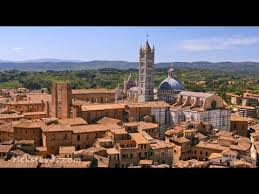This sketch of the human story began in a cave; the cave which popular science associates with the cave-man and in which practical discovery has really found archaic drawings of animals. The second half of human history, which was like a new creation of the world, also begins in a cave. There is even a shadow of such a fancy in the fact that animals were again present; for it was a cave used as a stable by the mountaineers of the uplands about Bethlehem; who still drive their cattle into such holes and caverns at night. It was here that a homeless couple had crept underground with the cattle when the doors of the crowded caravanserai had been shut in their faces; and it was here beneath the very feet of the passersby, in a cellar under the very floor of the world, that Jesus Christ was born. But in that second creation there was indeed something symbolical in the roots of the primeval rock or the horns of the prehistoric herd. God also was a Cave-Man, and had also traced strange shapes of creatures, curiously coloured, upon the wall of the world; but the pictures that he made had come to life. A mass of legend and literature, which increases and will never end, has repeated and rung the changes on that single paradox; that the hands that had made the sun and stars were too small to reach the huge heads of the cattle. Upon this paradox, we might almost say upon this jest, all the literature of our faith is founded. It is at least like a jest in this, that it is something which the scientific critic cannot see. He laboriously explains the difficulty which we have always defiantly and almost derisively exaggerated; and mildly condemns as improbable something that we have almost madly exalted as incredible; as something that would be much too good to be true, except that it is true. When that contrast between the cosmic creation and the little local infancy has been repeated, reiterated, underlined, emphasised, exulted in, sung, shouted, roared, not to say howled, in a hundred thousand hymns, carols, rhymes, rituals, pictures, poems, and popular sermons, it may be suggested that we hardly need a higher critic to draw our attention to something a little odd about it; especially one of the sort that seems to take a long time to see a joke, even his own joke. But about this contrast and combination of ideas one thing may be said here, because it is relevant to the whole thesis of this book. The sort of modern critic of whom I speak is generally much impressed with the importance of education in life and the importance of psychology in education. That sort of man is never tired of telling us that first impressions fix character by the law of causation; and he will become quite nervous if a child’s visual sense is poisoned by the wrong colours on a golliwog or his nervous system prematurely shaken by a cacophonous rattle. Yet he will think us very narrow-minded if we say that this is exactly why there really is a difference between being brought up as a Christian and being brought up as a Jew or a Moslem or an atheist. The difference is that every Catholic child has learned from pictures, and even every Protestant child from stories, this incredible combination of contrasted ideas as one of the very first impressions on his mind. It is not merely a theological difference. It is a psychological difference which can outlast any theologies. – from The Everlasting Man (1925)

The God in the Cave
© 2024 The Catholic Thing. All rights reserved. For reprint rights, write to: [email protected]
The Catholic Thing is a forum for intelligent Catholic commentary. Opinions expressed by writers are solely their own.














